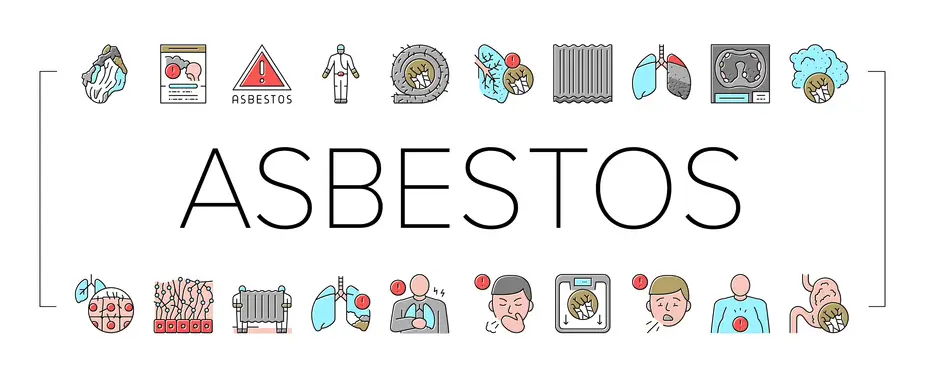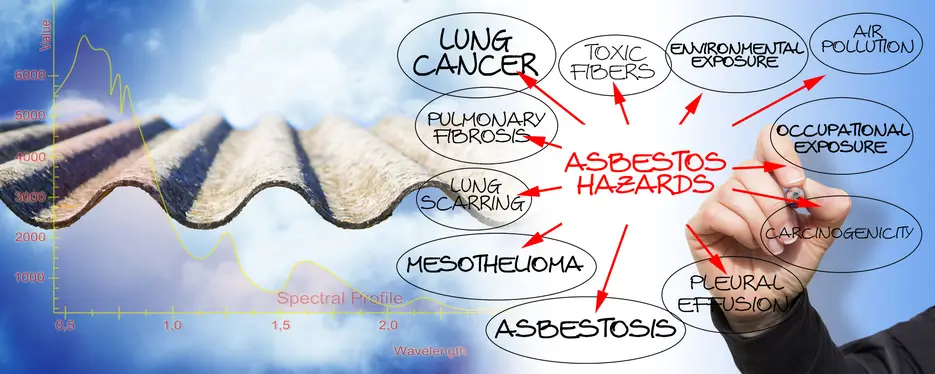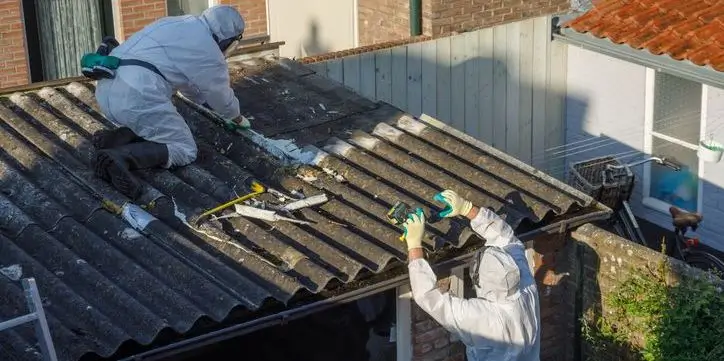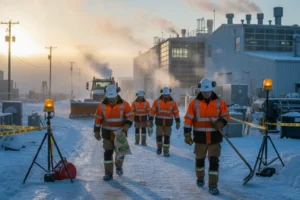Asbestos is a naturally occurring mineral widely used in construction and manufacturing due to its fire resistance, durability, and insulating properties. However, it has since been recognized as a serious health hazard. Exposure to asbestos fibers can lead to severe illnesses, including lung cancer, asbestosis, and mesothelioma. Despite efforts to phase out its use, asbestos remains a significant concern in older buildings, industrial settings, and renovation projects.
Understanding asbestos safety is crucial for workers who may be in contact with this hazardous material. This guide explores what asbestos is, the risks associated with exposure, occupations most likely to be affected, and safety measures to minimize risk.
What is Asbestos?
Asbestos is a naturally occurring mineral widely used in construction and manufacturing due to its fire resistance, durability, and insulating properties. However, it has since been recognized as a serious health hazard. Exposure to asbestos fibers can lead to severe illnesses, including lung cancer, asbestosis, and mesothelioma. Despite efforts to phase out its use, asbestos remains a significant concern in older buildings, industrial settings, and renovation projects.

There are two main types of Asbestos:
- Serpentine Asbestos (Chrysotile): Also known as white asbestos, chrysotile has curly, flexible fibers and is the most commonly used form. It was widely used in ceilings, walls, roofs, and automobile brake pads.
- Amphibole Asbestos: This group includes crocidolite (blue asbestos), amosite (brown asbestos), tremolite, actinolite, and anthophyllite. These have straight, brittle, needle-like fibers that are more hazardous as they lodge deeply in lung tissues when inhaled.
Despite its usefulness, asbestos exposure poses severe health risks. Inhalation of asbestos fibers can lead to diseases such as mesothelioma, asbestosis, and lung cancer. Due to these dangers, asbestos use is now banned or heavily restricted in many countries.
How Can Asbestos Harm Workers?
When materials containing asbestos are disturbed, they release microscopic fibers into the air. If inhaled, these fibers can become lodged in the lungs, leading to life-threatening conditions. Some of the primary health risks include:
- Asbestosis: A chronic lung disease caused by long-term exposure to asbestos fibers, leading to lung scarring and breathing difficulties.
- Mesothelioma: A rare and aggressive cancer that affects the lining of the lungs, heart, or abdomen, primarily linked to asbestos exposure.
- Lung Cancer: Prolonged asbestos exposure significantly increases the risk of lung cancer, especially among smokers.
- Pleural Plaques and Thickening: The buildup of fibrous tissue in the lung linings, leads to reduced lung function.

Symptoms of asbestos-related diseases often take decades to appear, making early detection and prevention critical for workers in high-risk industries.
What Workers Are Likely To Be Exposed To Asbestos?
Certain occupations are at a higher risk of asbestos exposure due to their work environment. These include:

- Construction Workers: Those involved in the renovation, demolition, or maintenance of older buildings may come into contact with asbestos-containing materials (ACMs).
- Shipyard Workers: Asbestos was widely used in shipbuilding for insulation, putting shipyard workers at risk.
- Firefighters: When buildings containing asbestos catch fire, airborne fibers can pose a serious hazard.
- Industrial Workers: Factories manufacturing asbestos products before regulations were in place may still contain residual asbestos.
- Plumbers, Electricians, and HVAC Technicians: Working in older buildings can expose these professionals to asbestos-containing insulation, pipes, and ceilings.
- Miners: Those extracting asbestos or working in mines with natural asbestos deposits face direct exposure risks.
- Auto Mechanics: Asbestos was historically used in brake pads, clutches, and gaskets, putting auto mechanics at risk.
- Teachers and Office Workers: While not traditionally considered high-risk, individuals working in older buildings with deteriorating asbestos-containing materials may be exposed over time.
What Should Be Done To Protect Workers?
Employers and workers must follow strict asbestos safety guidelines to prevent exposure. Here are essential measures to ensure worker safety:

1. Identify and Assess Asbestos Risks
- Conduct asbestos surveys in buildings and industrial sites to identify potential hazards.
- Label and document areas containing asbestos to prevent accidental disturbances.
- Hire licensed professionals to assess asbestos risks before beginning any renovation or demolition project.
2. Implement Engineering Controls
- Use wet methods or HEPA-filtered vacuum systems to reduce airborne asbestos fibers.
- Enclose or encapsulate asbestos-containing materials to minimize exposure.
- Improve ventilation in work areas to ensure proper airflow and minimize contamination.
3. Provide Personal Protective Equipment (PPE)
- Workers handling asbestos should wear respirators with HEPA filters.
- Disposable coveralls, gloves, and shoe covers should be used and safely disposed of after use.
- Safety goggles and face shields should be worn to prevent fibers from reaching the eyes and face.
4. Follow Safe Work Practices
- Avoid cutting, sanding, or drilling asbestos-containing materials.
- Use hand tools instead of power tools to minimize dust generation.
- Implement proper decontamination procedures, including washing hands and changing clothes after handling asbestos.
- Establish controlled work zones where asbestos exposure is likely, limiting access to essential personnel only.
5. Conduct Training and Awareness Programs
- Employers should provide training on asbestos hazards, safe handling procedures, and emergency response protocols.
- Workers must understand the risks and how to recognize asbestos-containing materials.
- Annual refresher training should be conducted to ensure continued awareness and adherence to safety protocols.
6. Ensure Proper Waste Disposal
- Asbestos waste must be handled according to regulatory guidelines.
- Dispose of asbestos-containing materials at approved hazardous waste facilities.
- Use leak-tight, labeled containers for asbestos waste and ensure they are properly sealed before disposal.
7. Follow Legal and Regulatory Requirements
- Adhere to local, state, and federal asbestos regulations to ensure adherence.
- Obtain necessary permits before conducting asbestos removal or disposal.
- Conduct air monitoring before, during, and after asbestos-related work to confirm safe conditions.
Conclusion
Asbestos remains a significant occupational hazard despite efforts to phase out its use. Workers in high-risk industries must stay informed about the dangers of asbestos exposure and follow safety guidelines to protect themselves. Employers should prioritize worker safety by conducting risk assessments, implementing proper controls, and providing necessary training and protective equipment.
Preventing asbestos exposure requires a collective effort from regulatory bodies, employers, and workers. By implementing stringent safety measures, ensuring adherence with regulations, and fostering a culture of awareness, we can significantly reduce the health risks associated with asbestos exposure.
Ultimately, the goal is to protect the well-being of workers and future generations by ensuring the safe handling, disposal, and management of asbestos-containing materials. Taking proactive steps today can prevent devastating health consequences tomorrow.






